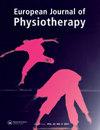Psychosocial risk factors and physical and mental well-being following a compensable knee injury
IF 1.1
Q3 REHABILITATION
引用次数: 1
Abstract
Abstract Objectives The objective of this study was to examine the association between a cumulative number of psychosocial factors and pain, physical disability, mental well-being, clinical examination, and work status following a compensable knee injury. Methods This study involved a secondary analysis of electronic data of consecutive injured workers. Pain and functional difficulty were measured by the Numeric Pain Rating Scale (NPRS) and the lower extremity functional scale (LEFS), respectively. Anxiety and depression were measured by the Hospital Anxiety and Depression Scale (HADS). Results Data of 150 patients, 47 (31%) females and 103 (69%) males, mean age = 47 (13) were analysed. The cumulative number of psychosocial factors had a statistically significant relationship with LEFS (p = 0.0003), anxiety (p = 0.0001), depression (p < 0.0001), knee flexion (p = 0.02), knee extension (p = 0.005), and work status (p = 0.042). Conclusions The presence of three or more psychosocial risk factors following a knee injury is an indication of higher levels of mental and physical disability and poorer work status. The positive association between psychosocial flag signs and clinical examination merits a bio-psychosocial approach in workers with knee injuries.可补偿膝损伤后的心理社会风险因素和身心健康
摘要目的本研究的目的是研究可补偿性膝关节损伤后累积的社会心理因素与疼痛、身体残疾、心理健康、临床检查和工作状态之间的关系。方法对连续工伤工人的电子资料进行二次分析。疼痛和功能困难分别采用数字疼痛评定量表(NPRS)和下肢功能量表(LEFS)进行测量。焦虑和抑郁采用医院焦虑抑郁量表(HADS)进行测量。结果150例患者中,女性47例(31%),男性103例(69%),平均年龄47岁(13岁)。心理社会因素的累积数量与LEFS (p = 0.0003)、焦虑(p = 0.0001)、抑郁(p < 0.0001)、膝关节屈曲(p = 0.02)、膝关节伸直(p = 0.005)、工作状态(p = 0.042)有统计学意义。结论:膝关节损伤后存在三种或三种以上的社会心理危险因素,表明患者精神和身体残疾程度较高,工作状态较差。社会心理标志和临床检查之间的积极联系值得对膝盖损伤的工人进行生物社会心理治疗。
本文章由计算机程序翻译,如有差异,请以英文原文为准。
求助全文
约1分钟内获得全文
求助全文

 求助内容:
求助内容: 应助结果提醒方式:
应助结果提醒方式:


